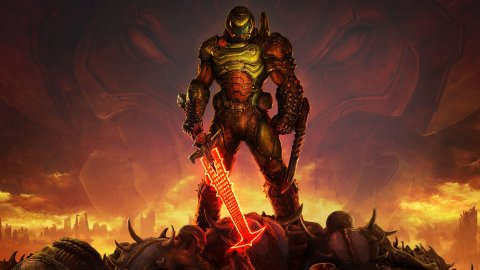NVIDIA DLSS 2.3: GeForce RTX advanced upscaling evolves once again

NVIDIA DLSS 2.3
NVIDIA DLSS advanced upscaling is on the way to exceeding the 130 supported title mark and celebrates the event by upgrading to version 2.3. A new step forward, therefore, with a better use of motion vectors, which leads to an increase in the quality of fast-moving objects such as vehicles and particles as well as improved image stability. It is no coincidence that NVIDIA has put the spotlight on these aspects for a couple of the first updated titles which are Cyberpunk 2077, finally freed from the ghosting effect, and DOOM Eternal which no longer has to sacrifice the quality of the particles to obtain the benefits of DLSS.The update to version 2.3 of the DLSS technology can be implemented with a patch which made it possible to implement it in several titles including Baldur's Gate 3, also here with improvements to the particles as in the case of DOOM Eternal, and also Enlisted, with an overall increase in image stability by eliminating or at least reducing flicker. But the list of supported titles is much longer.
DLSS 2.3 eliminates ghosting and improves detail in motion pictures Titles with NVIDIA DLSS 2.3 support
Baldur's Gate 3 Bright Memory: Infinite Cyberpunk 2077 Crysis 2 Remastered Crysis 3 Remastered Deathloop DOOM Eternal Farming Simulator 22 (available November 22) Grand Theft Auto: The Trilogy - The Definitive Edition Grand Theft Auto 3 Definitive Edition Grand Theft Auto Vice City Definitive Edition Grand Theft Auto San Andreas Definitive Edition Jurassic World Evolution 2 Marvel's Guardians of the Galaxy Rise of the Tomb Raider Shadow of the Tomb Raider Sword & Fairy 7
Motion vectors are important for the functioning of DLSS which, trying to predict the next frame, in order to raise its quality without weighing on the hardware, must also take into account the position that the objects in the image will have. must create. It is no coincidence that they were one of the main innovations of DLSS 2.0, a real turning point that has finally allowed NVIDIA technology to show a potential whose boundaries we do not yet see.
In the meantime, however, we enjoy the advantages it brings, clearly superior to those of a spatial upscaler regardless of the quality of the latter. Therefore, it does not matter whether we are talking about AMD FidelityFX Super Resolution technology or the new NVIDIA Image Scaling, updated to guarantee better results thanks to a sharpening algorithm, greater control over the upscaling settings and to give developers the possibility, thanks to the new SDK , to implement it on all GPUs, including those from Intel and AMD.
The particle rendering of DOOM Eternal improves dramatically with DLSS 2.3 The supported titles are already officially more than 130, although some are still in the pipeline, with a clear jump from the 45 games supported at the end of the first quarter of 2021. But with the integration of NVIDIA DLSS technology into the Unreal Engine and Unity, its diffusion has begun to gallop and hardly will stop, aiming to also eliminate the need for implementation work by developers, at the crucial moment precisely for the aforementioned motion vectors.
A once this last obstacle has been overcome, we speak of a technology destined to become a standard. On the other hand, the potential is almost unlimited, so much so that Intel has to implement something similar, called Xess, on its first gaming GPUs arriving at the beginning of 2022.
Have you noticed any errors?
NVIDIA takes on AMD FSR with their new open source Image Scaling
Here’s a comparison from Necromunda: Hired Gun, comparing three scaling techniques against the game’s native rendering at 4K. On the left, with the game’s built-in temporal anti-aliasing, the monitor’s text is somewhat legible. Using NVIDIA Image Scaling and other spatial upscalers, the resolution is decreased to 2955x1622 and the text becomes illegible, though performance does increase to far more playable levels.
In contrast, NVIDIA DLSS renders at 1920x1080, but through the magic of AI and GeForce RTX Tensor Cores, image quality is better than native 4K, the monitor’s text is clearer, and performance is more than doubled, giving players the definitive experience in Necromunda: Hired Gun.